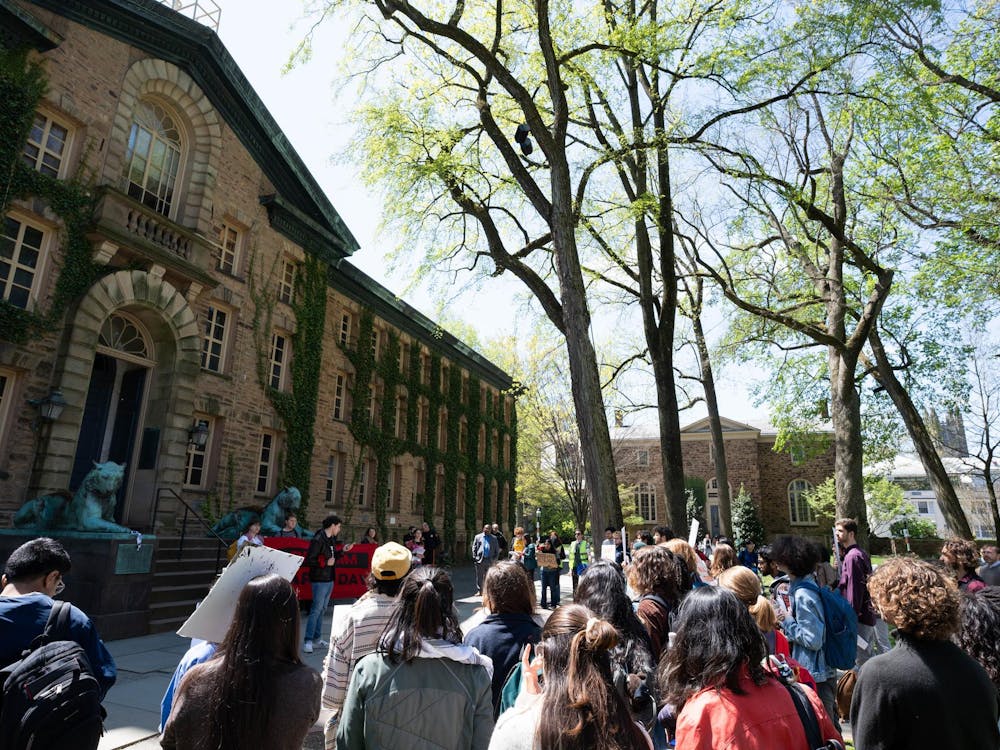We tend to scroll past most images, headlines and stories, skimming the text and glancing at the picture. Maybe it’ll elicit a click, like or share; maybe not.
But on occasion there’s an image or story that really grips us, even our emotions. The image of the drowned Syrian boy, Aylan Kurdi, on the Turkish coast. The image of Boston Marathon bombing victim James “Bim” Costello, limping away with burns all over his body. The video of Eric Garner gasping, “I can’t breathe,” as a police officer puts him in a chokehold. The story of Madison Holleran’s tragic suicide.
Adversity doesn’t strike only individuals thousands of miles away. Here we can see others dealing with hardship, but it can be as hard, if not harder, to care about those closer to home. The student who works three jobs, takes six classes and still makes it to the gym every day. The victim of sexual assault walking to SHARE. The victim of domestic violence walking back from CPS.
How many of these individuals can you truly empathize with? Bostonians shared in the fear and sense of unity that prevailed after the bombing. Black people felt outrage and attacked after Garner’s killing — among many other tragic deaths — spurring the Black Lives Matter movement and gaining empathy from all races. University of Pennsylvania students understood Holleran’s plight, and the story hit home for many people struggling with similar issues. Are similar emotions through similar experiences required to bridge this empathetic gap?
Nicholas Kristof insists that the answer is no — he can see himself and his family in the images of Syrian refugees in The New York Times. But it is one thing to imagine your family being displaced. The experiences of a young boy in an occupied territory, a victim of third-degree burns — perhaps that’s a bit harder for the average college student to understand. Even the perspective of a college student who’s depressed presents its own barriers, or one who’s trying to independently support herself and her family is unique. These stories grab our attention and invoke powerful emotions, but can such narratives make us at the same time share the pain, mirror the experiences and truly empathize with these individuals?
And if we currently can’t, could we?
Literature seems to think so, with a plethora of self-help books about empathy as a skill, art and field of study: “The Power of Empathy,” “The Art of Empathy,” “The Empathic Civilization,” “The Age of Empathy.”
Science wants to think so, with scientists trying to figure out exactly how empathy works in an endeavor to produce more of it. In the 1990s, researchers first discovered mirror neurons, brain cells that explain how and why we empathize with people. According to the American Psychological Association, research now shows that these neurons respond not only to others’ actions and emotions, but their motivations. Stanford’s Virtual Human Interaction Lab is pioneering an “Empathy at Scale” project, which aims to create “virtual reality interventions that teach empathy” — empathy toward people with disabilities, of different races and ages.
However, German philosopher Edith Stein wrote that empathy could not be created or taught. She believed it could be facilitated through the cultivation of other related behaviors.
In reality, our lack of experience limits our human empathy. We can only relate and see ourselves in others to a certain degree, and that’s largely due to no fault of our own. Even Kristof is able to see himself in the Syrian refugees by virtue of his own father, who was a refugee in Europe. A variety of basic factors — including race, socioeconomic status, family, genes and birthplace — can determine a predisposition to the limits of our empathy. A lot of these factors are immutable. But understanding our limitations is just as important as being able to empathize to begin with.
In acknowledging the limits of our own empathy, we must realize the limits of empathy itself. Sometimes, empathy just isn’t enough. As argued in a piece on empathy in The New Yorker, empathy can pull us the wrong way sometimes, as is arguably the case with retributive justice. When we seek to empathize with the victim of a crime, we may flock to support capital punishment for the perpetrator, and that empathy only leads us to take another life.
And often times, it’s a measure of our humanity and reason — not empathy — that leads us to accept refugees into our homes, fight police brutality or oppose a war. Empathy may not be the solution to racism, ignorance and injustice (if a solution even exists). Empathy belongs in our interpersonal relationships, but when seeking to understand and address the larger issue behind the individual in a photograph, it takes more than empathy, which is at its root, merely an emotion.

That doesn’t mean we should abandon empathy. Helping others can be motivated by empathy, but we should acknowledge that it is one tool to help others, not the only way.
Sarah Sakha is a sophomore from Scottsdale, Ariz. She can be reached at ssakha@princeton.edu.








